Vi siete mai chiesti come siamo arrivati così lontano in termini di qualità delle immagini e risoluzione sui nostri schermi? Dai display granulosi e pixelati di una volta alle immagini incredibilmente nitide di oggi, l'evoluzione della risoluzione è stata un viaggio selvaggio. Allacciate le cinture, gente, perché stiamo per intraprendere un viaggio attraverso i regni del 2K, 4K, 8K (UHD-2) e oltre!
Immagina questo: sei seduto davanti alla TV, in attesa impaziente dell'ultimo film campione d'incassi. Mentre scorrono i titoli di testa, vieni immediatamente trasportato in un mondo di dettagli e profondità senza pari. Ogni ciocca di capelli, ogni granello di polvere, ogni intricata trama prende vita davanti ai tuoi occhi. Questo, amici miei, è il potere dell'alta risoluzione.
Ma come siamo arrivati fin qui? Facciamo un viaggio nella memoria ed esploriamo l'affascinante storia dello sviluppo della risoluzione e dell'evoluzione dei display.
Indice dei contenuti

Nozioni di base sulla risoluzione 2K
Nel regno delle immagini ad alta definizione, il termine "risoluzione 2K" viene spesso usato come una patata bollente. Ma cosa significa esattamente e perché dovrebbe interessarvi? Analizziamolo nel dettaglio, va bene?
Definizione e significato delle varie risoluzioni
La risoluzione, nel contesto dei display digitali, si riferisce al numero di pixel che compongono un'immagine o un video. Più pixel ci sono, più nitida e dettagliata è l'immagine. È come avere una tela con più pennellate individuali, che consentono un dipinto più intricato e realistico.
La risoluzione 2K, nota anche come 2048 x 1080 pixel, è un passo avanti rispetto al buon vecchio 1080p (1920 x 1080 pixel), che un tempo era lo standard del settore per i display ad alta definizione. Sebbene 2K possa non sembrare un grande passo avanti, offre un notevole miglioramento nella qualità e nei dettagli delle immagini.
Ma aspetta, c'è di più! La risoluzione 4K, con i suoi 3840 x 2160 pixel, porta le cose a un livello completamente nuovo. Immagina di quadruplicare il numero di pixel sul tuo schermo: è questo il tipo di stravaganza visiva di cui stiamo parlando. E per coloro che esigono il massimo assoluto della nitidezza, la risoluzione 8K (7680 x 4320 pixel) è il Santo Graal, offrendo ben 33,2 milioni di pixel con cui giocare.
Confronto tra risoluzioni 2K, 4K e 8K
Per darvi un'idea migliore di come si confrontano queste risoluzioni, tiriamo fuori una tabella utile:
| Risoluzione | Pixel (totale) | Proporzioni |
| 2K | 2.073.600 | 1.9:1 |
| 4K | 8.294.400 | 1.9:1 |
| 8K | 33.177.600 | 1.9:1 |
Come puoi vedere, ogni livello di risoluzione rappresenta un balzo sostanziale nel conteggio dei pixel e, di conseguenza, nella qualità dell'immagine. È come passare da un'auto compatta a una berlina di lusso e poi a un jet privato: il livello di dettaglio e immersione continua a migliorare sempre di più.
Risoluzione 2K e dispositivi compatibili
Bene, ora che abbiamo capito le basi, parliamo di come sperimentare davvero la gloria della risoluzione 2K. Allacciate le cinture, perché stiamo per immergerci nei dettagli di cavi, interfacce e compatibilità dei dispositivi.
Introduzione alla risoluzione 2K e alle sue applicazioni
La risoluzione 2K, con i suoi 2048 x 1080 pixel, ha trovato posto in una varietà di applicazioni, dalla proiezione cinematografica digitale al montaggio video professionale e oltre. Sebbene non sia l'avanguardia della tecnologia di risoluzione, il 2K offre comunque un miglioramento significativo rispetto al buon vecchio 1080p, rendendolo una scelta popolare per coloro che cercano un passo avanti nella qualità dell'immagine senza spendere una fortuna.
Cavi supportati e tipi di interfaccia
Per liberare tutto il potenziale della risoluzione 2K, dovrai assicurarti che i tuoi cavi e i tipi di interfaccia siano all'altezza del compito. Le opzioni più comuni per l'output 2K includono:
- Uscita HDMI 1.4: Questa è la versione HDMI minima richiesta per supportare la risoluzione 2K fino a 30 fotogrammi al secondo (fps). Sebbene non sia l'opzione più all'avanguardia, HDMI 1.4 è ampiamente supportata e facilmente disponibile.
- Porta Display: Altra scelta popolare per l'output 2K, DisplayPort offre una connessione solida e affidabile con supporto per frequenze di aggiornamento e risoluzioni più elevate (fino a 4K e oltre, a seconda della versione).
Selezione del cavo per l'uscita 2K
Quando si tratta di selezionare cavi per output 2K, è essenziale considerare fattori come lunghezza del cavo, larghezza di banda e compatibilità con i dispositivi. Ecco alcune delle migliori opzioni da considerare:
| Tipo di cavo | Risoluzione massima | Frequenza di aggiornamento massima | Lunghezza massima del cavo |
| Uscita HDMI 1.4 | 2K | Frequenza 60 Hz | 50 piedi |
| Porta Display 1.2 | 2K | Frequenza 60 Hz | 100 piedi |
| Porta Display 1.3 | 2K | Frequenza 120 Hz | 100 piedi |
| Connettore DVI | 2K | Frequenza 60 Hz | 50 piedi |
| USB-C (con modalità DP Alt) | 2K | Frequenza 60 Hz | 16,4 piedi |
Per coloro che cercano un cavo HDMI 2K affidabile, allora Cabletime HDMI 2 extra lungo da 50 piedi.0 Cavo (disponibile in varie lunghezze) è un'opzione economica che fa il suo dovere. Se sei alla ricerca di un cavo DisplayPort, allora il Cavo DisplayPort a DisplayPort 1.2 (disponibile in lunghezze fino a 16,4 piedi) è una scelta solida.
Specifiche tecniche e requisiti di prestazione
Per garantire un'esperienza 2K fluida, è fondamentale avere dispositivi compatibili che soddisfino le specifiche tecniche e i requisiti di prestazioni necessari. Ecco alcuni fattori chiave da considerare:
- Scheda grafica: La tua unità di elaborazione grafica (GPU) dovrebbe essere in grado di eseguire il rendering e l'output con una risoluzione 2K al frame rate e alle impostazioni di qualità dell'immagine desiderati.
- Ingressi di visualizzazione: Il monitor o la TV devono avere ingressi HDMI 1.4 o DisplayPort per supportare segnali con risoluzione 2K.
- Larghezza di banda: Garantire una larghezza di banda sufficiente è essenziale per trasmettere la grande quantità di dati richiesta per la risoluzione 2K. HDMI 1.4 supporta fino a 10,2 Gbps, mentre DisplayPort 1.2 offre fino a 17,28 Gbps.
- Potenza di elaborazione: A seconda dello scenario di utilizzo (ad esempio, giochi, editing video, ecc.), potrebbe essere necessaria una CPU potente e una RAM sufficiente per gestire il carico di lavoro maggiore associato a risoluzioni più elevate.
Pro e contro della risoluzione 2K
Come ogni tecnologia, la risoluzione 2K ha i suoi pro e contro. Diamo un'occhiata veloce ad alcuni dei più notevoli:
Pro:
- Qualità dell'immagine e dettaglio migliorati rispetto al 1080p
- Ampiamente supportato da vari dispositivi e fonti di contenuti
- Più conveniente rispetto alle risoluzioni più elevate come 4K e 8K
Contro:
- Limitata protezione futura poiché le risoluzioni più elevate diventano più diffuse
- Requisiti hardware aumentati per prestazioni ottimali
- Potenziali problemi di compatibilità con dispositivi o cavi più vecchi
Cavi e dispositivi nell'era del 4K
Proprio quando pensavate che il 2K fosse l'apice dell'eccellenza visiva, ecco che arriva la risoluzione 4K a farci di nuovo impazzire. Preparatevi, gente, perché stiamo per esplorare il mondo dell'ultra-alta definizione (UHD) e dei cavi e dispositivi che lo rendono possibile.
Spiegazione dei parametri di risoluzione 4K e miglioramento della nitidezza dell'immagine
La risoluzione 4K, nota anche come UHD (Ultra High Definition), vanta ben 3840 x 2160 pixel, ovvero quattro volte la risoluzione del caro vecchio 1080p! Con 8,3 milioni di pixel a tua disposizione, puoi aspettarti una nitidezza delle immagini che è a dir poco sbalorditiva. È come avere una finestra sulla realtà, con ogni minimo dettaglio, ogni consistenza, ogni sfumatura portata in vita con sorprendente precisione.
Ma non si tratta solo del numero di pixel; il 4K offre anche una gamma cromatica più ampia e una gamma dinamica più elevata, con conseguenti colori più ricchi e vivaci e neri più profondi. Immagina di poter percepire ogni sfumatura e tonalità sottile, dai pastelli più delicati alle tonalità più audaci e vivide. È un'esperienza visiva che ti immerge davvero nell'azione, che tu stia guardando un film campione d'incassi o esplorando un mondo virtuale in un videogioco.
Standard per la trasmissione video 4K
Per sfruttare appieno il potenziale della risoluzione 4K, dovrai assicurarti che i tuoi cavi e dispositivi siano all'altezza del compito. La buona notizia è che esistono standard consolidati per la trasmissione video 4K, come:
- Uscita HDMI 2.0:Questo standard ampiamente adottato supporta la risoluzione 4K fino a 60 fotogrammi al secondo (fps), insieme all'High Dynamic Range (HDR) e una gamma cromatica più ampia.
- Uscita HDMI 2.1:L'ultima versione di HDMI si spinge ancora oltre, supportando risoluzioni fino a 10K, frame rate più elevati (fino a 120 fps per 4K) e funzionalità avanzate come Variable Refresh Rate (VRR) e Auto Low Latency Mode (ALLM).
- Porta Display 1.4: Per non essere da meno, DisplayPort 1.4 offre anche supporto 4K a 120 Hz, insieme a HDR e una gamma cromatica più ampia.
Selezione del cavo per l'uscita 4K
Con gli standard in atto, è tempo di parlare di cavi. Quando si tratta di output 4K, vorrai assicurarti che i tuoi cavi possano gestire la maggiore larghezza di banda e il throughput dei dati richiesti per i contenuti ad altissima definizione. Ecco alcune delle migliori opzioni da considerare:
| Tipo di cavo | Risoluzione massima | Frequenza di aggiornamento massima | Lunghezza massima del cavo |
| HDMI 2.0 | 4K | Frequenza 60 Hz | 16,4 piedi |
| Uscita HDMI 2.1 | 4K | Frequenza 120 Hz | 16,4 piedi |
| Porta Display 1.2 | 4K | Frequenza 60 Hz | 100 piedi |
| Porta Display 1.3 | 4K | Frequenza 120 Hz | 100 piedi |
| Connettore DVI | 4K | Frequenza 60 Hz | 50 piedi |
| USB-C (con modalità DP Alt) | 4K | Frequenza 60 Hz | 16,4 piedi |
Per un cavo HDMI 4K affidabile, Cavo HDMI 2.0 maschio-maschio premium (disponibile in varie lunghezze) è una scelta solida, che offre ampia larghezza di banda e compatibilità con gli standard HDMI 2.0. Se sei del team DisplayPort, il Da Displayport 1.4 a HDMI 2.1 Cavo (fino a 9,8 piedi) è un'ottima opzione per una connettività 4K senza interruzioni.
Caratteristiche e prestazioni dei dispositivi compatibili con 4K
Naturalmente, avere i cavi giusti è solo un pezzo del puzzle. Per provare davvero la magia del 4K, avrai bisogno di dispositivi all'altezza del compito. Ecco una rapida carrellata di alcune caratteristiche chiave e requisiti di prestazioni per la compatibilità con il 4K:
- Display 4K: Che si tratti di una TV 4K all'avanguardia o di un monitor ad alta risoluzione, il display dovrebbe disporre degli ingressi HDMI o DisplayPort necessari, nonché della tecnologia del pannello (ad esempio IPS, OLED) per offrire straordinarie immagini 4K.
- Grafica potente:Una scheda grafica potente è essenziale per il rendering e la riproduzione fluida di contenuti 4K, soprattutto quando si tratta di applicazioni impegnative come il gaming o l'editing video.
- Potenza di elaborazione robusta:Una CPU efficiente e una RAM sufficiente sono essenziali per gestire il carico di lavoro elevato associato ai contenuti ad altissima definizione.
- Fonti di contenuti 4K: Che si tratti di servizi di streaming, dischi Blu-ray o console di gioco, per apprezzare davvero la risoluzione è necessario avere accesso a contenuti 4K-ready.
Pro e contro della risoluzione 4K
Come ogni tecnologia, la risoluzione 4K ha la sua giusta quota di vantaggi e svantaggi. Diamo un'occhiata veloce ad alcuni dei più notevoli:
Pro:
- Immagini incredibilmente dettagliate e realistiche
- Gamma cromatica più ampia e gamma dinamica più elevata per colori più ricchi e vivaci
- A prova di futuro poiché il 4K diventa il nuovo standard per la distribuzione dei contenuti
Contro:
- Requisiti hardware aumentati (GPU, CPU, larghezza di banda) per prestazioni ottimali
- Disponibilità limitata dei contenuti in alcune regioni o piattaforme
- Costo più elevato rispetto alle risoluzioni più basse
Soluzioni 8K (UHD-2)
Proprio quando pensavi che il 4K fosse l'apice dell'eccellenza visiva, ecco che arriva la risoluzione 8K a farci di nuovo impazzire. Preparatevi, gente, perché stiamo per esplorare l'avanguardia della tecnologia ad altissima definizione e i cavi e i dispositivi che la rendono possibile.
Dettagli tecnici della risoluzione 8K e del suo miglioramento della qualità dell'immagine
La risoluzione 8K, nota anche come UHD-2 o Super Hi-Vision, è una vera meraviglia della moderna tecnologia di imaging. Con ben 7680 x 4320 pixel, ovvero ben 33,2 milioni di pixel in totale, l'8K offre una nitidezza delle immagini e un livello di dettaglio semplicemente sbalorditivi.
Immagina di essere in grado di percepire ogni minima sfumatura, ogni sottile consistenza, ogni minuto dettaglio con una precisione così sorprendente che ti sembrerà di sbirciare attraverso una finestra nella realtà stessa. Il livello di immersione è davvero senza pari, che tu stia guardando un documentario sulla natura, esplorando un mondo virtuale in un videogioco o esaminando immagini mediche ad alta risoluzione.
Ma non si tratta solo del numero di pixel; l'8K vanta anche una gamma cromatica più ampia e una gamma dinamica più elevata, con conseguenti colori più ricchi e vivaci e neri più profondi. È come sperimentare l'intero spettro del mondo visibile, con ogni sfumatura e tonalità riprodotte con una precisione mozzafiato.
Requisiti della tecnologia dei cavi e delle connessioni
Per sfruttare appieno il potenziale della risoluzione 8K, avrai bisogno di cavi e tecnologie di connessione in grado di gestire i requisiti di throughput e larghezza di banda dei dati massicci. Ecco alcuni degli standard e delle specifiche chiave di cui dovrai essere a conoscenza:
- Uscita HDMI 2.1: L'ultima versione di HDMI supporta risoluzioni fino a 10K (anche se con frame rate inferiori per 8K), insieme a funzionalità avanzate come Variable Refresh Rate (VRR), Auto Low Latency Mode (ALLM) e supporto per larghezze di banda maggiori (fino a 48 Gbps).
- Porta Display 2.0:Il futuro standard DisplayPort 2.0 promette il supporto per la risoluzione 8K a 60 Hz, con una larghezza di banda massima di 77,4 Gbps, più che sufficiente per gestire le esigenze dei contenuti ad altissima definizione.
- Fibra ottica HDMI: Per tratte di cavi più lunghe o installazioni in cui i tradizionali cavi in rame potrebbero non essere pratici, le soluzioni HDMI in fibra ottica offrono un'alternativa affidabile e ad alta larghezza di banda per la trasmissione di segnali 8K su distanze maggiori.
Selezione del cavo per l'uscita 8K
Quando si tratta di selezionare cavi per output 8K, vorrai assicurarti che soddisfino i requisiti di larghezza di banda e throughput dei dati necessari. Ecco alcune delle migliori opzioni da considerare:
| Tipo di cavo | Risoluzione massima | Frequenza di aggiornamento massima | Lunghezza massima del cavo |
| Uscita HDMI 2.1 | 8K | Frequenza 120 Hz | 16,4 piedi |
| Porta Display 1.4 | 8K | Frequenza 60 Hz | Varia |
| USB-C (con modalità DP Alt) | 8K | Frequenza 60 Hz | Varia |
Per una connettività HDMI 8K affidabile, Cavo ottico attivo HDMI 2.1 CABLETIME (disponibile in varie lunghezze) è una scelta solida, che offre ampia larghezza di banda e compatibilità con lo standard HDMI 2.1. Se stai cercando una soluzione in fibra ottica a prova di futuro, Cavo HDMI 2.0 in fibra ottica attiva (AOC) (disponibile in lunghezze fino a 100 metri) è un'opzione di prim'ordine per la trasmissione di segnali 8K su lunghe distanze.
Dispositivi di mercato che supportano 8K e sfide future
Sebbene l'8K possa sembrare fantascienza, sul mercato sono già presenti una manciata di dispositivi e display che supportano questa risoluzione all'avanguardia. Dai monitor e TV professionali di fascia alta alle apparecchiature di imaging specializzate, la rivoluzione dell'8K sta lentamente ma inesorabilmente guadagnando terreno.
Tuttavia, con richieste così massicce di risoluzione e larghezza di banda, ci sono ancora sfide significative da superare prima che l'8K diventi mainstream. Uno degli ostacoli più grandi è la grande quantità di potenza di elaborazione richiesta per rendere e riprodurre senza problemi contenuti 8K, specialmente in applicazioni impegnative come il gaming o l'editing video.
Anche le schede grafiche e le CPU più potenti oggi disponibili sul mercato possono avere difficoltà a mantenere frame rate e prestazioni costanti alla risoluzione 8K, in particolare se si considerano il ray tracing, gli elevati refresh rate e altre tecniche di rendering avanzate.
Un'altra sfida risiede nell'ecosistema di creazione e distribuzione dei contenuti. Mentre i direttori della fotografia e i fotografi professionisti potrebbero abbracciare l'8K per i suoi dettagli senza pari e le sue capacità a prova di futuro, l'adozione diffusa di contenuti 8K per il consumo mainstream è ancora lontana.
Le piattaforme di streaming, i provider via cavo e persino i supporti fisici come i dischi Blu-ray dovranno adattarsi per accogliere le enormi dimensioni dei file e i requisiti di larghezza di banda dei contenuti 8K. È un problema complesso e sfaccettato che richiederà cooperazione e innovazione nell'intera pipeline di creazione e distribuzione dei contenuti.
Pro e contro della risoluzione 8K
Come ogni tecnologia all'avanguardia, la risoluzione 8K ha i suoi pro e contro. Diamo un'occhiata veloce ad alcuni dei più notevoli:
Pro:
- Qualità delle immagini e dettagli senza pari, per un'esperienza visiva davvero coinvolgente
- A prova di futuro, poiché l'8K diventa il nuovo standard per l'imaging professionale e la creazione di contenuti
- Gamma cromatica più ampia e gamma dinamica più elevata per immagini più ricche e vivaci
Contro:
- Requisiti hardware estremamente elevati (GPU, CPU, larghezza di banda) per prestazioni ottimali
- Disponibilità limitata dei contenuti e compatibilità con i dispositivi e le infrastrutture esistenti
- Costo notevolmente più elevato rispetto a risoluzioni inferiori come 4K
Collegare le sfide delle risoluzioni ultra-elevate
Mentre ci avventuriamo nei regni delle risoluzioni ultra-elevate come 8K e oltre, le sfide della trasmissione ed elaborazione di tali enormi quantità di dati diventano sempre più complesse. Ma dove ci sono sfide, ci sono anche opportunità di innovazione e scoperte tecnologiche.
Ricerca in corso sulla tecnologia ad altissima risoluzione e qualità delle immagini prevista
Sebbene l'8K possa sembrare l'apice dell'eccellenza visiva, ricercatori e ingegneri in tutto il mondo stanno già lavorando duramente per esplorare le prossime frontiere della tecnologia ad altissima risoluzione. Da 16K a risoluzioni che lasciano perplessi, la ricerca di una qualità e di un dettaglio delle immagini sempre maggiori continua senza sosta.
Ma non si tratta solo di stipare più pixel su uno schermo; la vera sfida sta nello sviluppare tecnologie di imaging in grado di catturare e riprodurre l'intera profondità, sfumatura e gamma dinamica del mondo reale. Ciò coinvolge tutto, dai design avanzati dei sensori e dalle tecniche di fotografia computazionale alle tecnologie di visualizzazione all'avanguardia in grado di riprodurre con precisione l'intero spettro di colori e livelli di luminanza.
Immagina un mondo in cui i display possono ricreare l'esperienza di guardare attraverso una finestra, con ogni sottile variazione di luce, texture e profondità riprodotta fedelmente. È un obiettivo ambizioso, ma che potrebbe rivoluzionare campi come l'imaging medico, la visualizzazione scientifica e persino la realtà virtuale.
Tecnologia dei cavi all'avanguardia per la trasmissione ad altissima risoluzione
Man mano che le risoluzioni continuano a salire, la necessità di una trasmissione dati più veloce ed efficiente diventa fondamentale. I tradizionali cavi in rame, pur essendo affidabili, potrebbero alla fine raggiungere i loro limiti in termini di larghezza di banda e integrità del segnale, soprattutto su lunghe distanze.
Per affrontare queste sfide, ricercatori e ingegneri stanno esplorando tecnologie di cavi all'avanguardia in grado di trasmettere segnali ad altissima risoluzione con perdite o interferenze minime.Una strada promettente è la tecnologia dei cavi in fibra ottica, che offre una larghezza di banda incredibilmente elevata e una bassa attenuazione del segnale, rendendola adatta alla trasmissione di enormi quantità di dati su lunghe distanze.
Un altro sviluppo intrigante è l'emergere di tecnologie di trasmissione wireless in grado di gestire contenuti ad altissima risoluzione. Sebbene ancora agli inizi, la prospettiva di trasmettere risoluzioni 8K o addirittura superiori in modalità wireless potrebbe rivoluzionare il modo in cui consumiamo e interagiamo con i contenuti, eliminando del tutto la necessità di cavi fisici.
Tendenze future nella progettazione di dispositivi e connettori
Poiché le risoluzioni continuano a spostare i limiti del possibile, la progettazione dei dispositivi e dei connettori dovrà evolversi per soddisfare le crescenti esigenze di larghezza di banda e di velocità di trasmissione dei dati.
Una tendenza che stiamo già osservando è l'adozione di standard di connettori avanzati come USB4 e Thunderbolt, che offrono velocità di trasferimento dati incredibilmente elevate e supporto per vari protocolli, tra cui DisplayPort e HDMI. Questi connettori versatili potrebbero svolgere un ruolo cruciale nello snellire il panorama della connettività e fornire un'esperienza fluida su una gamma di dispositivi e risoluzioni.
Un'altra tendenza da tenere d'occhio è la continua miniaturizzazione di componenti e connettori. Man mano che i dispositivi diventano più piccoli e compatti, la necessità di soluzioni di connettività efficienti in termini di spazio diventa fondamentale. I design innovativi in grado di racchiudere più larghezza di banda in fattori di forma più piccoli saranno fondamentali per abilitare display e dispositivi ad altissima risoluzione che siano sia potenti che portatili.
Guida alla selezione dell'utente
Con così tante risoluzioni, tipi di cavi e specifiche dei dispositivi da considerare, scegliere la configurazione giusta per le tue esigenze può essere un compito arduo. Non temere, caro lettore, perché abbiamo messo insieme una guida completa alla selezione utente per aiutarti a navigare nelle acque ad alta risoluzione con sicurezza.
Guida per gli utenti alla scelta di cavi e dispositivi in base alle esigenze e al budget
Quando si tratta di selezionare i cavi e i dispositivi giusti per la tua configurazione ad alta risoluzione, è fondamentale considerare le tue esigenze specifiche e il tuo budget. Ecco una guida pratica per aiutarti a prendere una decisione informata:
- Determina la risoluzione desiderata: Stai puntando a 2K, 4K, 8K o forse anche di più? Il tuo obiettivo di risoluzione determinerà i requisiti del cavo e del dispositivo.
- Valuta le fonti dei tuoi contenuti: Che tipo di contenuti intendi consumare? Film, programmi TV, giochi, editing video professionale? Assicurati che i tuoi dispositivi e cavi siano compatibili con le tue fonti di contenuti preferite.
- Considera i tuoi requisiti di distanza: Se è necessario trasmettere segnali su distanze maggiori, potrebbe essere necessario optare per cavi e tecnologie in grado di gestire tratte più lunghe (ad esempio, fibra ottica HDMI, HDBaseT).
- Valuta il tuo budget: Le risoluzioni più elevate spesso hanno un prezzo più elevato, quindi è essenziale trovare un equilibrio tra la qualità dell'immagine desiderata e i limiti di budget.
- Rendi la tua configurazione a prova di futuro: Sebbene sia allettante puntare sulla tecnologia più recente e migliore, considera per quanto tempo intendi utilizzare la tua configurazione. Investire in cavi e dispositivi a prova di futuro può farti risparmiare costosi aggiornamenti in futuro.
- Controlla la compatibilità: Prima di effettuare qualsiasi acquisto, assicurati che i tuoi cavi, dispositivi e fonti di contenuto siano compatibili tra loro. Fai un controllo incrociato delle specifiche e, se necessario, consulta degli esperti.
Valutazione della compatibilità e delle prestazioni di diversi marchi e tecnologie
Nel mondo dei cavi e dei dispositivi ad alta risoluzione, non tutti i marchi e le tecnologie sono uguali.Ecco una rapida valutazione di alcuni dei principali attori del mercato:
Cavi:
- Prezzo singolo:Nota per i suoi cavi convenienti ma di alta qualità, Monoprice offre un'ampia gamma di opzioni HDMI e DisplayPort adatte a varie risoluzioni.
- Il cavo è importante: Con un'attenzione particolare alla durata e all'affidabilità, Cable Matters è un marchio affidabile per le soluzioni via cavo destinate sia ai consumatori che ai professionisti.
- Foschia:Per chi è alla ricerca di cavi HDMI in fibra ottica all'avanguardia, in grado di trasmettere risoluzioni elevatissime su lunghe distanze, Phoxi è la scelta ideale.
Dispositivi:
- LG: All'avanguardia nella tecnologia TV OLED, LG offre una gamma di TV 4K e 8K con una qualità delle immagini e una riproduzione dei colori eccezionali.
- SAMSUNG: Pionieri nei display a punti quantici, i televisori e i monitor QLED di Samsung offrono immagini straordinarie e supportano varie risoluzioni, tra cui l'8K.
- Sony: Nota per i suoi display e le sue soluzioni di imaging di livello professionale, Sony offre una gamma di monitor e TV 4K e 8K con precisione cromatica ed elaborazione delle immagini leader del settore.
Schede grafiche:
- NVIDIA:La serie di schede grafiche RTX di NVIDIA, come la RTX 3090, offre un solido supporto per il gaming in 4K e 8K, oltre a funzionalità avanzate come il ray tracing e il DLSS.
- Degenerazione maculare:La serie Radeon RX 6000 di AMD, inclusa la RX 6900 XT, offre un'alternativa interessante per il gaming ad alta risoluzione e la creazione di contenuti.
Considerazioni e idee sbagliate comuni quando si acquistano dispositivi ad alta risoluzione
Quando si acquistano dispositivi ad alta risoluzione, è importante distinguere i fatti dalla finzione ed evitare i malintesi più comuni. Ecco alcune considerazioni chiave da tenere a mente:
- La risoluzione non è tutto:Sebbene risoluzioni più elevate offrano una migliore qualità e dettaglio delle immagini, anche altri fattori come la precisione del colore, il rapporto di contrasto e la frequenza di aggiornamento svolgono un ruolo cruciale nel determinare l'esperienza visiva complessiva.
- Rendimenti decrescenti: Man mano che le risoluzioni aumentano, il miglioramento percepito nella qualità dell'immagine può diventare più sottile, specialmente quando si guarda da distanze tipiche del soggiorno. È importante trovare un equilibrio tra risoluzione e altri fattori come dimensioni dello schermo e distanza di visione.
- La compatibilità è la chiave: Assicurati che i tuoi cavi, dispositivi e fonti di contenuto siano compatibili con la risoluzione desiderata. Mescolare e abbinare componenti incompatibili può portare a prestazioni non ottimali o persino al fallimento completo della trasmissione dei segnali.
- A prova di futuro vs. obsolescenza: Sebbene sia allettante investire nella tecnologia più recente e migliore, è anche importante considerare la longevità e la compatibilità futura della tua configurazione. Trovare un equilibrio tra la protezione per il futuro e l'evitare l'obsolescenza prematura è fondamentale.
- Non dimenticare la larghezza di banda: Risoluzioni più elevate richiedono una larghezza di banda notevolmente maggiore per la trasmissione e l'elaborazione. Assicurati che i tuoi cavi, dispositivi e infrastrutture di rete possano gestire le crescenti richieste di dati.
- Disponibilità dei contenuti: Mentre i contenuti 4K stanno diventando sempre più ampiamente disponibili, 8K e oltre sono ancora agli inizi. Considera la disponibilità di contenuti compatibili prima di investire in risoluzioni all'avanguardia.
- La calibrazione è fondamentale: Anche i display più avanzati possono trarre vantaggio da una corretta calibrazione per garantire una riproduzione accurata dei colori e una qualità ottimale delle immagini.

Conclusione
Mentre esploravamo i regni dell'alta risoluzione, da 2K a 4K, 8K e oltre, una cosa è diventata abbondantemente chiara: la ricerca dell'eccellenza visiva è un viaggio in continua evoluzione. Con ogni balzo tecnologico, ci avviciniamo sempre di più alla ricreazione della piena profondità, sfumatura e bellezza del mondo naturale sui nostri schermi.
Sebbene le sfide della trasmissione e dell'elaborazione di risoluzioni ultra-elevate siano formidabili, presentano anche entusiasmanti opportunità di innovazione. Dalle tecnologie via cavo all'avanguardia come la fibra ottica HDMI alle innovazioni nella trasmissione wireless, il futuro riserva possibilità illimitate.
Come consumatori, è essenziale avvicinarsi al panorama ad alta risoluzione con occhio attento e la volontà di abbracciare il cambiamento. Valutando attentamente le nostre esigenze, i nostri budget e i requisiti di compatibilità, possiamo prendere decisioni informate che raggiungano un equilibrio tra stravaganza visiva e considerazioni pratiche.
Guardando al futuro, si può tranquillamente affermare che l'era dell'alta risoluzione è ben lungi dall'essere finita. Man mano che le tecnologie di imaging continuano ad avanzare e i creatori di contenuti spingono i confini di ciò che è possibile, possiamo aspettarci risoluzioni ancora più elevate ed esperienze di visione più immersive.
Quindi, che tu sia un cinefilo esigente, un creatore di contenuti professionista o semplicemente qualcuno che apprezza i dettagli più fini della vita, abbraccia il viaggio e preparati a un futuro in cui i confini tra realtà e arte digitale si confondono in un arazzo fluido e visivamente sbalorditivo.
Le persone chiedono anche
L'8K è davvero così meglio del 4K?
Sì, l'8K offre una risoluzione molto più alta del 4K, il che si traduce in immagini più dettagliate con uno spazio colore espanso. Tuttavia, vale la pena notare che la risoluzione non è l'unico fattore nella qualità dell'immagine e anche altri aspetti come le prestazioni HDR (High Dynamic Range), il rapporto di contrasto e il colore possono avere un impatto significativo sull'esperienza visiva.
Esistono video in formato 10K e 16K?
Sì, esistono risoluzioni 10K e 16K, con 10K che ha una risoluzione di 10.240x5.760 o 4.320 pixel e 16K che vanta ben 15.360 x 8.640 pixel. Tuttavia, queste risoluzioni non sono ancora ampiamente utilizzate nei prodotti di consumo, con la maggior parte dei contenuti ancora prodotti in 4K o risoluzioni inferiori.
I televisori più grandi hanno una qualità migliore?
Sebbene le TV più grandi possano offrire un'esperienza visiva più immersiva, non offrono necessariamente una qualità migliore. La qualità dell'immagine è determinata da fattori quali risoluzione, prestazioni HDR (High Dynamic Range), rapporto di contrasto e colore, che possono variare tra le TV indipendentemente dalle loro dimensioni.

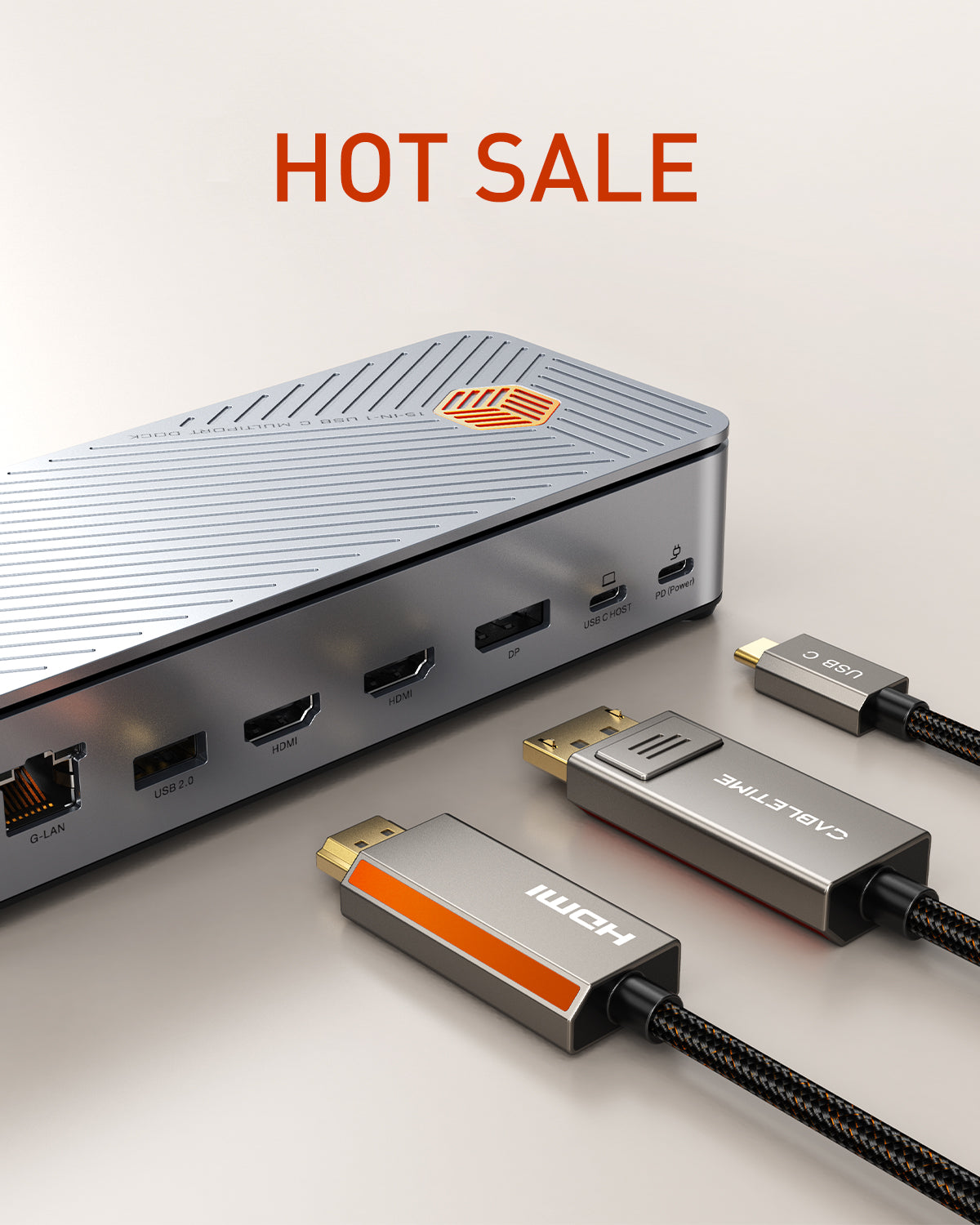
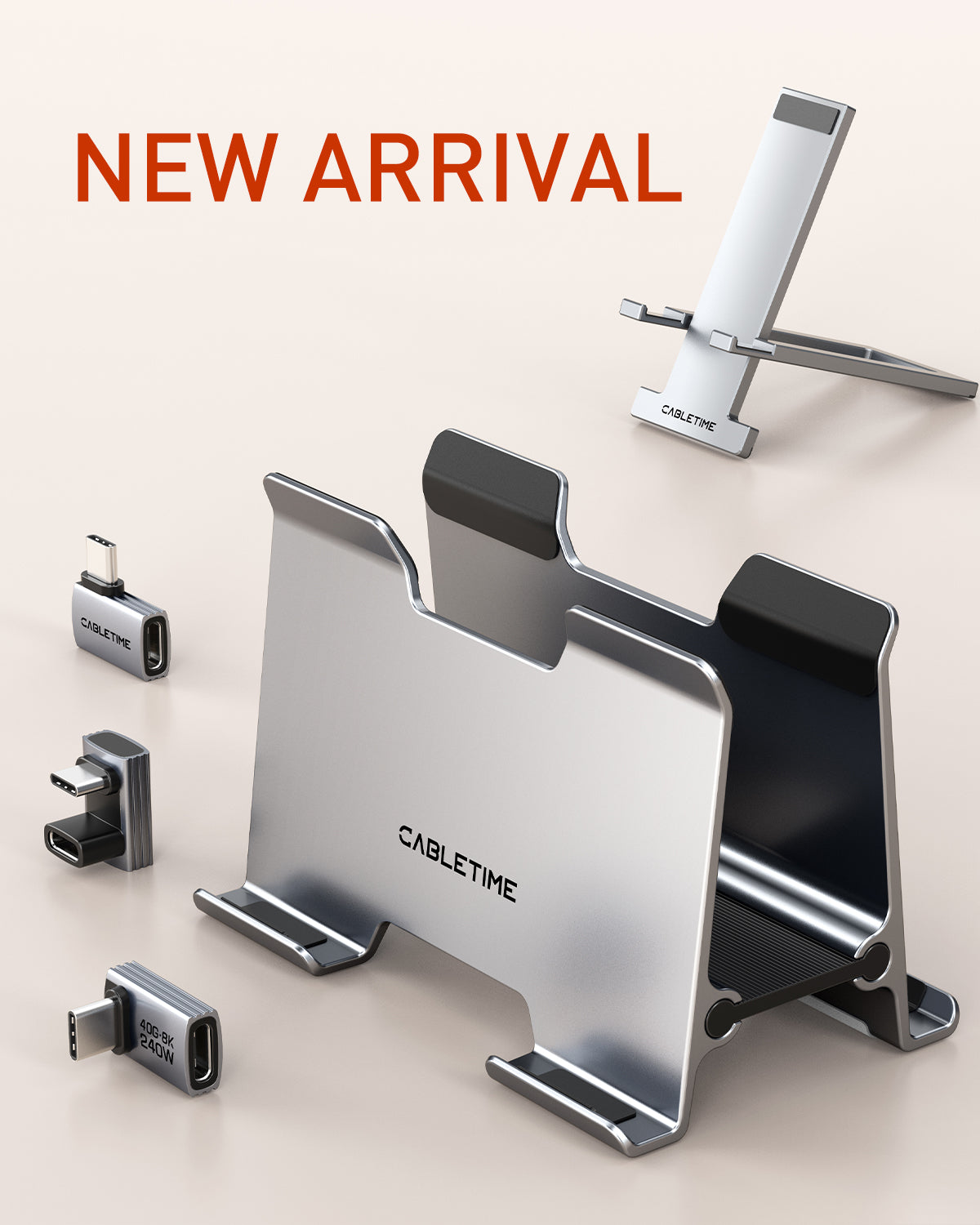
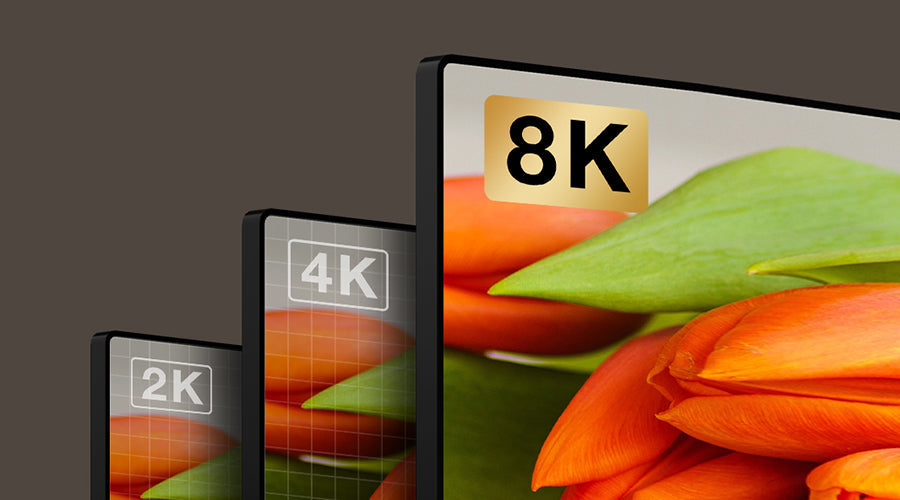
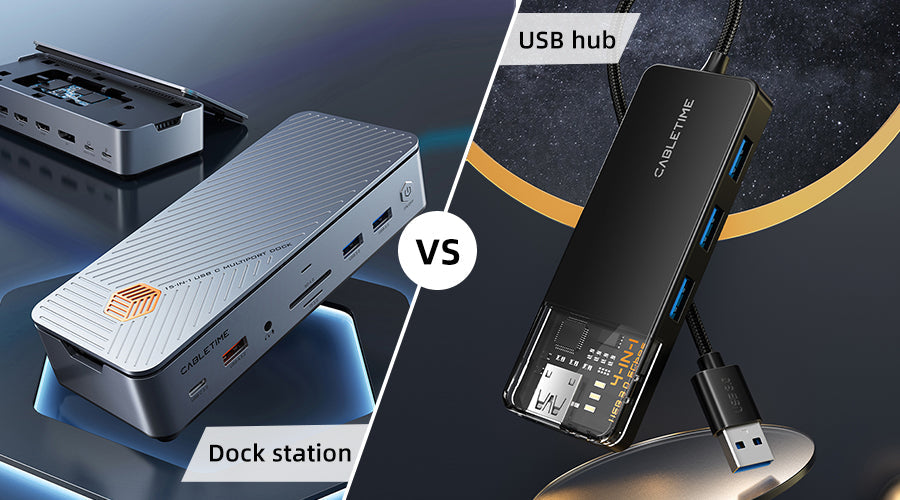
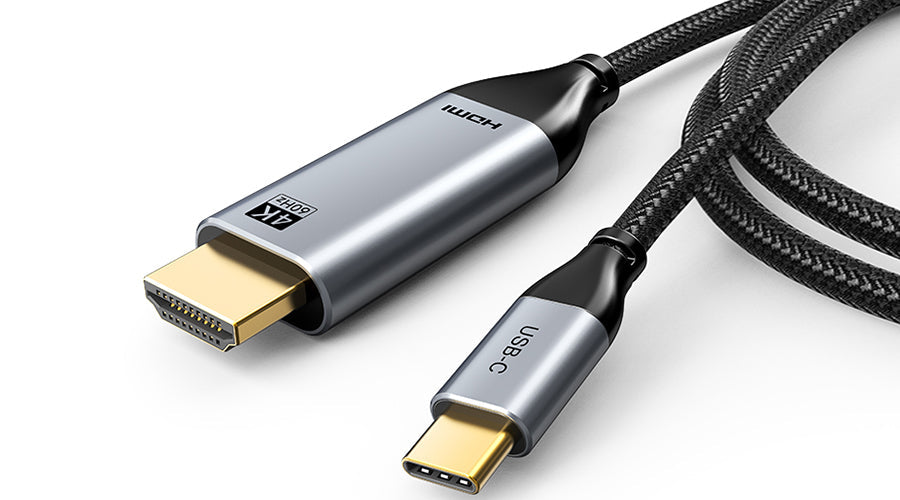
Lascia un commento
Questo sito è protetto da hCaptcha e applica le Norme sulla privacy e i Termini di servizio di hCaptcha.